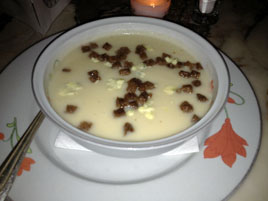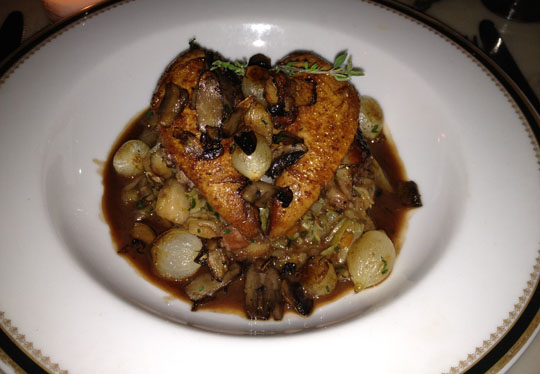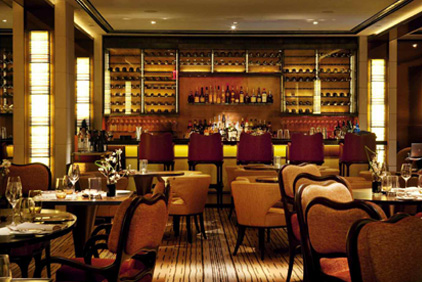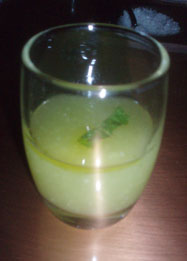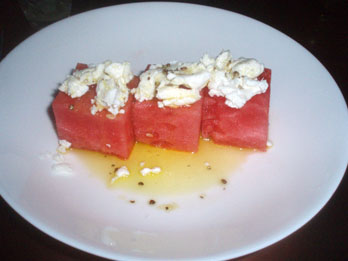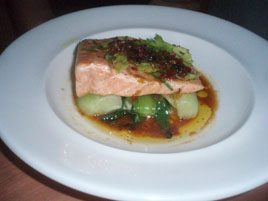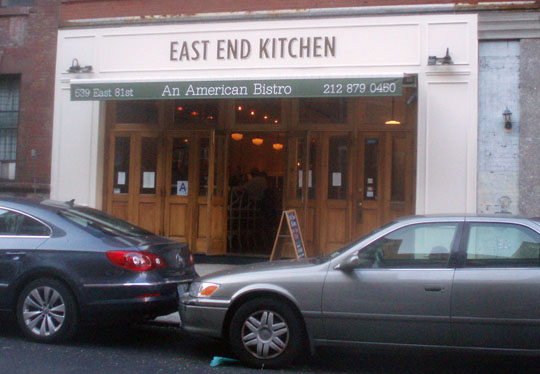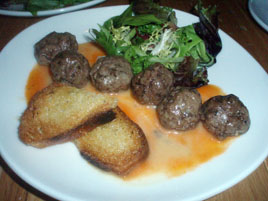Brasserie Cognac East
 Tuesday, August 13, 2013 at 07:01PM
Tuesday, August 13, 2013 at 07:01PM  Sometimes, you can just tell that a new restaurant fulfills a neighborhood’s long-felt need. That’s my reaction at Brasserie Cognac East on the Upper East Side French, which was packed to the gills on a random summer Tuesday.
Sometimes, you can just tell that a new restaurant fulfills a neighborhood’s long-felt need. That’s my reaction at Brasserie Cognac East on the Upper East Side French, which was packed to the gills on a random summer Tuesday.
Classic French cuisine has been on the upswing the last few years, as I and many others have noted. Still, the swish of the scythe was so devastating in the 1990s and early aughts that the arrival of another such establishment is welcome.
More, please.
Cognac East is the second of the family. Its older sister opened in West Midtown in 2008, as Brasserie Cognac de Monsieur Ballon. The fictitious M. Ballon, it seems, has been kicked to the curb. The chef, Florian V. Hugo (the Les Misérables author’s descendant), clearly knows his French cuisine. When it’s right, it’s very right.
Both restaurants are built for volume: there are 100 tightly-packed seats at Cognac East, on two levels. The space (formerly the Italian restaurant Lumi) is loud, and not the most charming. Internet reviews suggest the service can be uneven. That was my experience, too, at the original Brasserie Cognac. I had a terrific vol au vent on opening night, but a meal about six months later that I’d rather forget.
This must all, of course, be placed in the context of a mid-priced menu, with most entrées below $30 and most appetizers in the mid-teens — higher than Sel et Poivre, lower than Orsay, both nearby. If I lived in the area, Cognac would be in my regular rotation.


We loved the cheese puffs (above left) that started the meal. A tomato-y lobster bisque (above right) was really good.


The tuna tarte flambé (above left) is an unusual dish, but it works. The version we were served was spiced with wasabi, which is probably not in Escoffier’s cookbook. There is no mention of wasabi on the Internet menu, so perhaps that has been phased out.
The shoestring fries (above right) were crunchy and salty, exactly as they ought to be.

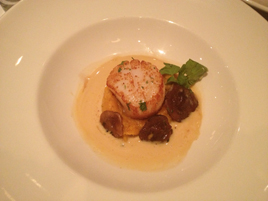
Steak tartare (above left) was disappointing, as an overdose of pepper completely smothered the over-sauced beef. But all was forgiven with a perfect scallop (above right) with mushrooms and a squash purée.


The cheese soufflé (above left), made with emmenthal, gruyère and parmesan, was one of the evening’s highlights, a must for soufflé connoisseurs. The side salad it comes with (above right) doesn’t add much to the dish.



If the desserts we sampled are any guide, your last memories will be good ones. Our favorite was the coconut shell (above left), with bitter chocolate, coconut sorbet, exotic fruit salad, and passion fruit sauce. Or try the rose macaron (above center) with litchies, fresh raspberries, rose cream and berry sauce. The floating island (above right) with poached meringue with caramel and vanilla crème anglaise was okay, but I have had better versions of this dish.
Full disclosure: we dined at the publicist’s invitation, sat in the corner booth, and got Cognac East’s best. The throngs packing the dining room are evidence enough that the neighborhood wants such a place. I hope the chef and his team can give it to them.
Brasserie Cognac East (963 Lexington Ave. at 70th Street, Upper East Side)







































































